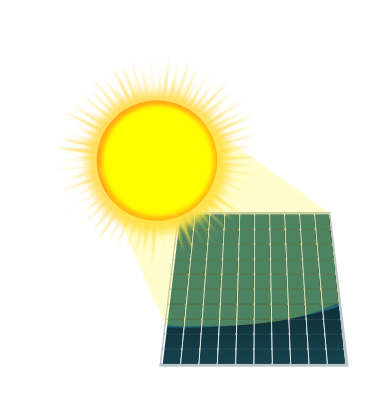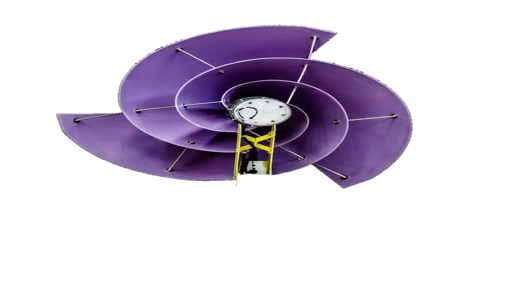Wind power is gradually rising to the challenge, and in the residential market, it is as popular as solar power. Meet the Liam F1 Mini Urban Wind Turbine by Archimedes – a miniature wind turbine specially developed for city use.
This small and revolutionary product delivers energy to home roofs and generates up to 1500 kWh of free electricity per year — and it is silent. The Liam F1 is quickly proving to be a strong contender for solar energy solutions and a worthy contender for solar panels for consumers who are concerned about sustainability and the environment.
The article triggers my hype meter, which is a bad thing if the product actualy delivers what it claims.
The design is new and looks neat, so I searched for an article with more information, and found this:
https://newatlas.com/the-archimedes-liam-f1-urban-wind-turbine/32263/
They do firmly claim a very high energy extraction rate (a power coefficient of 0.8):
Today the company officially introduced its Liam F1 Urban Wind Turbine, which is said to have an energy yield that is “80 percent of the maximum that is theoretically feasible.” That’s quite the assertion, given that most conventional wind turbines average around 25 to 50 percent.
The downside is a rotor with great surface area, and thus mass. It doesn’t weigh 20 kilograms like a bladed 1.5 meter turbine might be expected to weigh, it weighs 75 kilos.
The 75-kg (165-lb) 1.5-meter (5-ft)-wide Liam obviously doesn’t look much like a typical turbine. It draws on the form of the nautilus shell, and the screw pump invented by ancient Greek mathematician Archimedes of Syracuse.
For now, sadly, the cost is ridiculous. But I guess they need to recover their development cost somehow, and the manufacturing cost is considerably higher than with bladed turbines.
Although no price was given in today’s announcement, a previous posting on the company website puts it at €3,999 (about US$5,450).
How to find a cheaper manufacturing method? Good question. Printing one is probably very slow. It looks unsuitable for conventional blade-making technologies (glass fiber + resin). They seem to have made it from metal (I’m not 100% sure), but is there a better way?
The headline does seem a little like clickbait. Thanks for looking into it and sharing what you found.
Yeah this website seems to be all about click bait

honestly smaller scale to me is perfect. I would love something small enough for a condo balcony in both corners. Combine that with the railing solar and who knows.
1500 kWh per year is effectively nothing. That runs a midrange gaming PC for a few hours. The company won’t even tell you the price up front (the product page just has a link to their contact form), but word elsewhere on the web is that little turbine with that piddly output costs somewhere in the neighborhood of a ludicrous $5500. Per the graphs on the product page, their turbines also require a very narrow range of wind speeds to even come close to the claims about the power output: 12 m/s, which in 99.9% of the world is a significant gust, but it shuts off entirely at 14 m/s, and the output drops off very rapidly with wind speed. At half its maximum wind speed, it’s outputting 1/8 of its maximum output.
Contrast these limitations with traditional large wind turbines, which cut-in at around 4 m/s of wind speed (same as the Liam), but can maintain full capacity along a much wider range of wind speeds, typically from around 10 m/s all the way up to 20 m/s. For these turbines, half their maximum windspeed is still maximum power output. It’s a night and day difference in efficiency.
This mini-turbine may not be a scam, but it’s a product with a vanishingly small market. It’s for people who live in very particular locations where solar is either so inefficient as to not make financial sense or their property is occluded for most of the day, yet they also have access to continuous high winds that don’t fluctuate much and average right around this turbine’s sweet spot but no higher. There might be 1000 people in the entire world that this product is suited for, and I wouldn’t be surprised if the real number is far fewer. There’s no justification for any article to so enthusiastically say it “destroys” solar panels.
1 500 kWh isn’t a lot but a mid to high range PC should be able to run for at least 1 500 hours per year on that. Which is slightly above 4 hours a day if you use it every single day.
Very cool! Is it printable?
“Micro” still means a 1.5m diameter.
They have a smaller 0.75m one as well. Lower power, but 2ft vs 5ft if you need to save the space on your roof.
While it’s neat that it can automatically adjust for varying wind directions, does it have any way of adapting to very high wind speeds without exploding from too much wind force, like in a hurricane?
Harmony Turbines suffers neither of these problems…
Looks like its also a helix design made for high wind, so the answer is likely yes.
The design of the Liam F1 Mini is best suited for cities because turbulence is a characteristic of the wind within city limits. In such conditions, conventional turbines are ineffective; on the contrary, the Liam F1 is designed to perform well.
It actually has a helix-like structure, so it can self-adjust to face the wind in the same way that a weather vane moves. These features guarantee optimal performance and power generation irrespective of fluctuating, oscillating wind conditions.
I did read that part, but it only mentions self-adjusting the direction. It mentions nothing about furling up or any other self protective measures during dangerously high winds.





